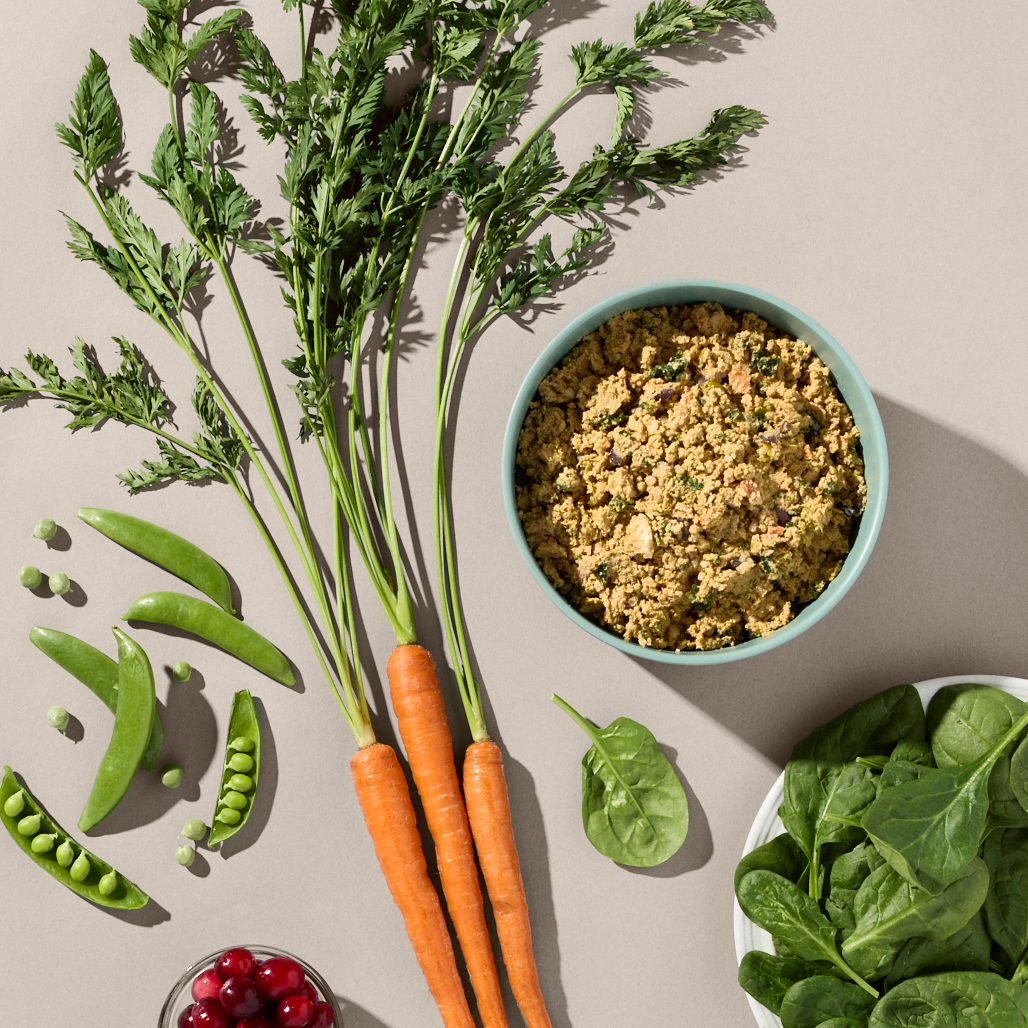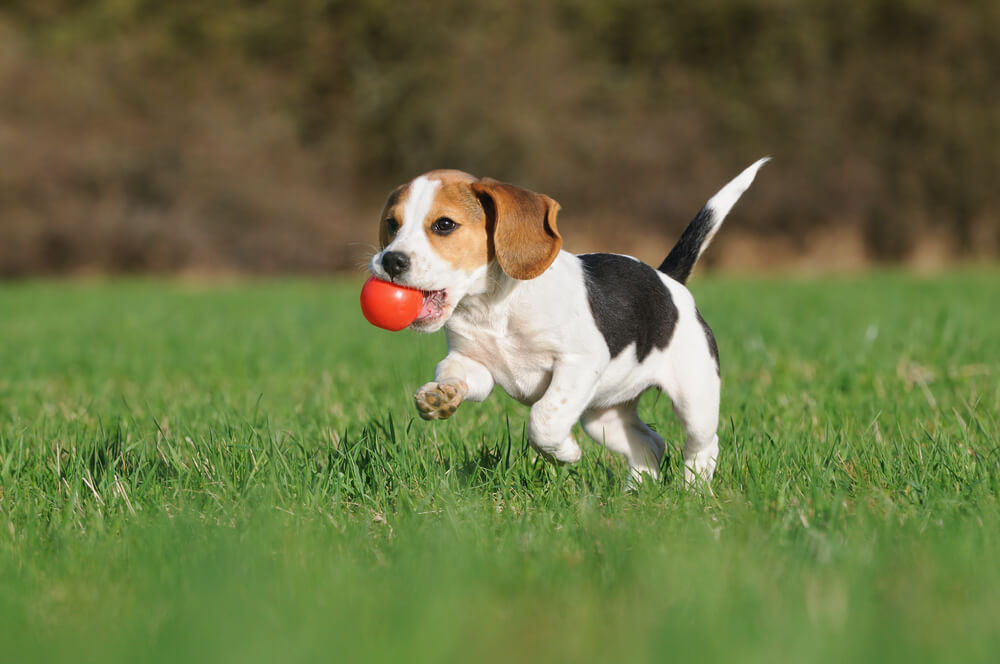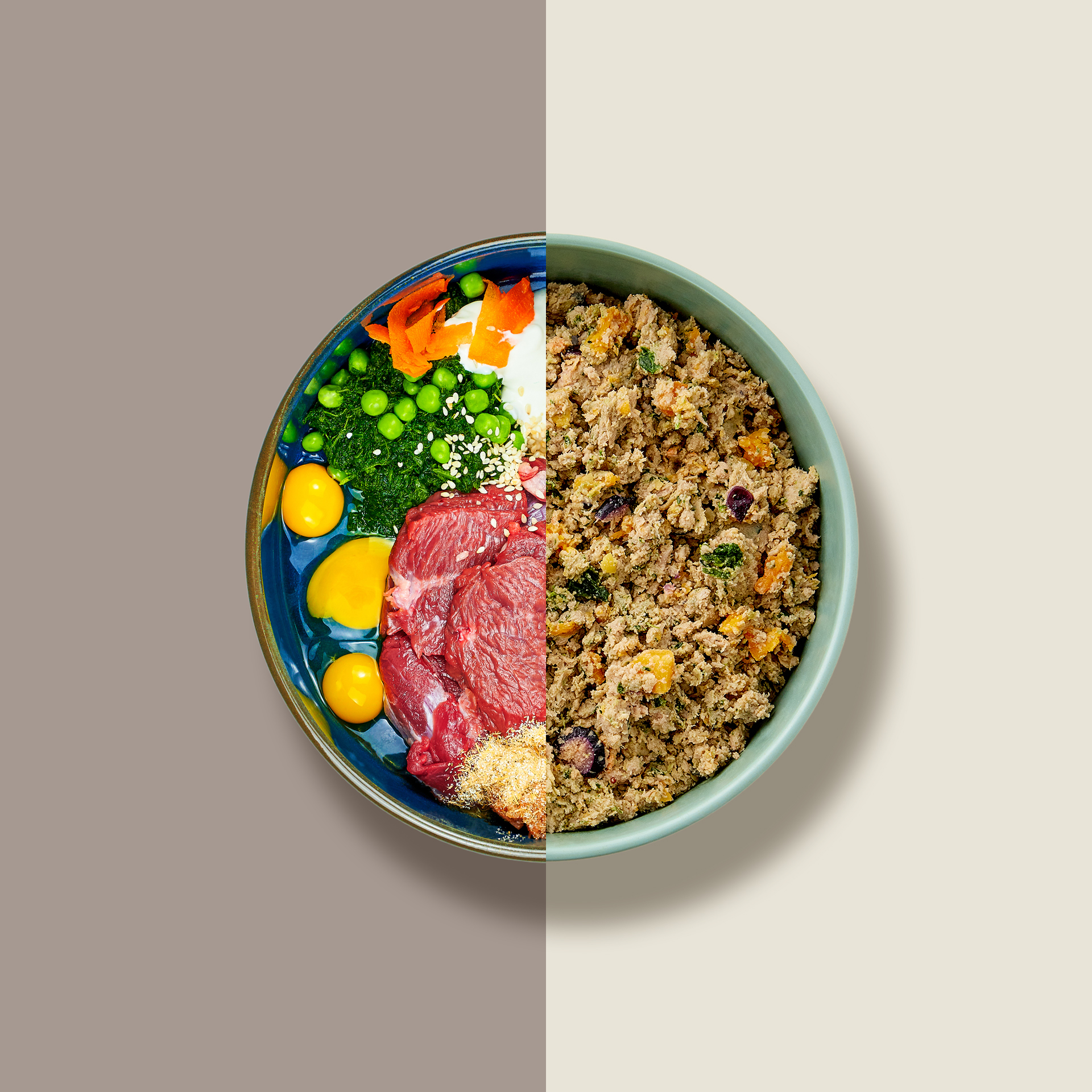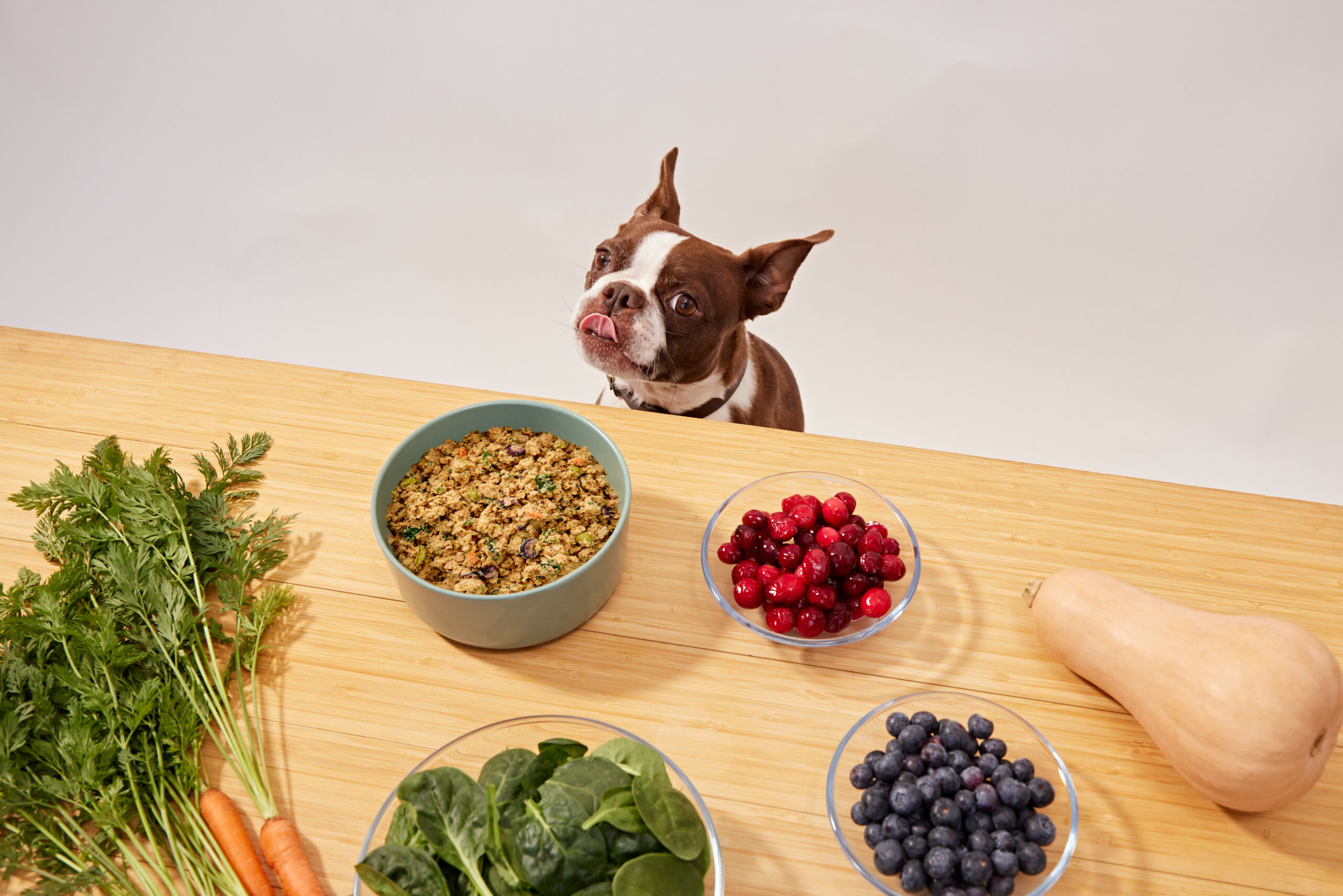Hey Ollie blog readers! We’re offering you an exclusive 60% OFF your starter box! Try now!
A healthier, happier dog starts with the right food. That said, knowing which diet is best for your pup can be overwhelming at times. Understanding what human-grade means, why it matters, and how it benefits your pup can help you make informed decisions about your dog’s diet.
What Does “Human-Grade” Mean?
According to the Association of American Feed Control Officials (AAFCO), “human-grade” means that all the ingredients are edible for humans [1]. This designation indicates that the food has gone through federal regulations similar to those for human food, including specific handling, manufacturing, and minimal processing requirements in USDA kitchens.
AAFCO’s Standards for Human-Grade Dog Food
A food is only considered human grade if all the ingredients in the formula are of human-grade quality and the food is also manufactured in a facility that produces human food [2]. This distinction is crucial because many brands will utilize specific human-grade ingredients to add the “human grade” claim to their packaging but use conventional ingredients and manufacturing practices for the rest of the food [2].
The AAFCO emphasizes that human-grade dog food is a term used to describe pet food products that meet the same quality and safety standards as food intended for human consumption [3], with ingredients sourced, processed, and handled consistent with human food standards.
The Science-Backed Benefits of Human-Grade Dog Food
Enhanced Nutrient Quality
Unlike kibble, which undergoes high-heat processing that can degrade nutrients, fresh dog food is minimally processed and retains more vitamins, minerals, and enzymes. Studies have shown that fresh food can be higher in essential nutrients like B vitamins and omega-3 fatty acids [4].
Superior Digestibility
Studies show that dogs digest fresh food really well, with absorption rates above 82%, especially when you have proteins and fats. This means our pets need less food to get the same nutrients [5]. Fresh dog food tends to be more digestible than dry or canned dog food [6].
Extended Lifespan
One of the most compelling benefits is longevity. According to one study, dogs who were fed a fresh diet lived an average of 13.1 years, while those fed commercial, canned dog food lived an average of 10.4 years. In other words, a fresh food diet could help you and your dog enjoy an additional 2.5 years [7].
Improved Health Outcomes
Research demonstrates multiple health benefits:
- Reduced inflammation: Research shows that dogs eating fresh food have lower pro-inflammatory markers, which points to better health as they age [5]
- Better immune function: Fresh diets also boost our dogs’ immune systems. Natural antioxidants in fresh foods fight harmful free radicals that can damage cell membranes and DNA [5]
- Enhanced digestion: Better digestion with firmer stools and less waste [5]
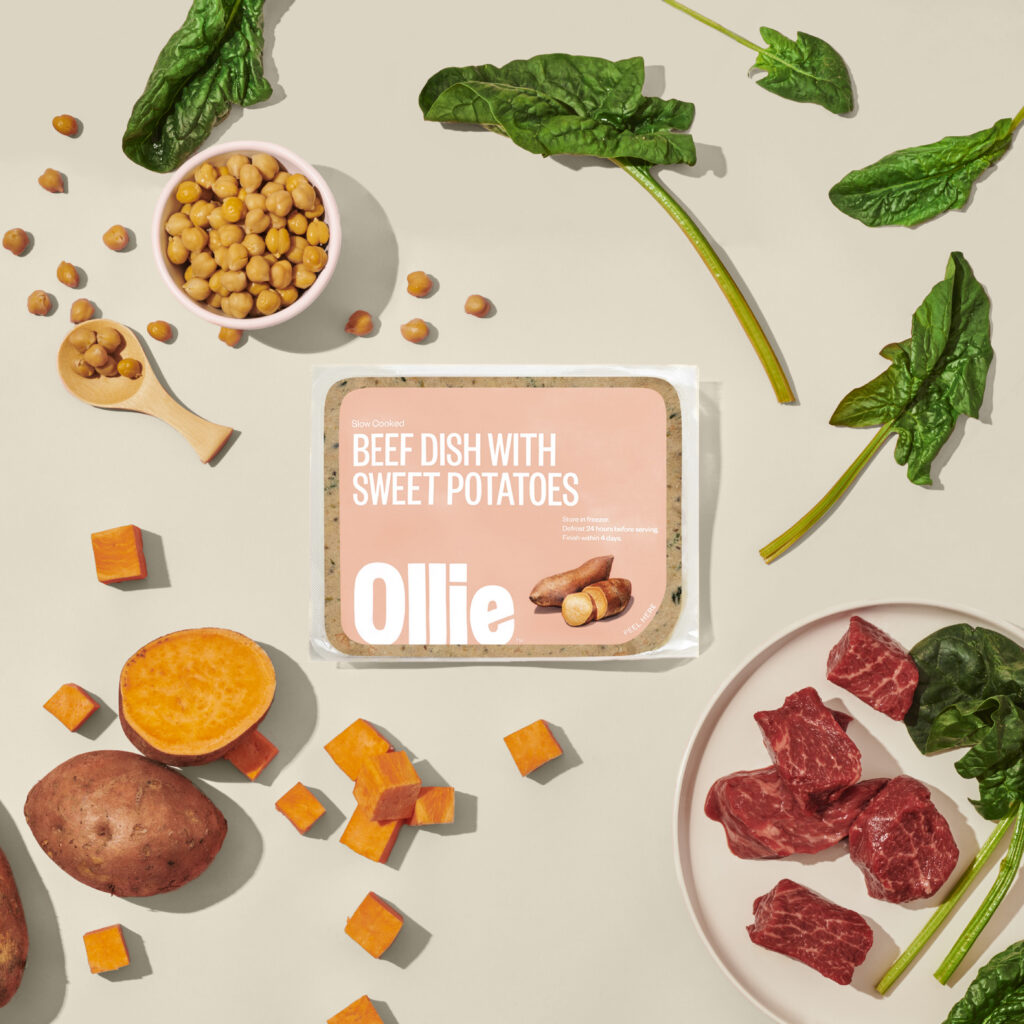
Key Features of Quality Human-Grade Dog Food
Premium Protein Sources
Even though human-grade dog food is more expensive than commercial brands, the quality ingredients speak for themselves. Human-grade dog food will not have any fillers or feed-quality-rendered meat meals; it should only have fresh, high-quality ingredients that provide loads of nutrients, antioxidants, vitamins, and minerals [1].
Minimal Processing and Transparency
Companies producing human-grade dog food often prioritize transparency in ingredient sourcing and labeling. Many human-grade pet food brands conduct safety and quality testing similar to those required for human food products [3].
Natural Hydration Benefits
Fresh human-grade dog food provides superior moisture content compared to dry kibble. Unlike dry kibble which contains just 10% water, fresh dog foods have a natural moisture content of about 75% , helping maintain proper hydration levels.

What to Look for in Human-Grade Dog Food Brands
When evaluating human-grade dog food options, consider these factors:
- AAFCO compliance: The best human-grade dog food brands make diets that are complete and balanced formulations that meet American Association of Feed Control Officials (AAFCO) requirements of nutritional adequacy for your dog’s intended life stage [2]
- Recognizable ingredients: Choose foods with short, clean ingredient lists containing whole foods you recognize
- Proper sourcing: Look for brands that source ingredients domestically and maintain transparency about their supply chain
- Expert formulation: Seek brands whose recipes are developed by veterinary nutritionists
Cost Considerations for Fresh Dog Food Brands
Human-grade dog food often comes with a higher price tag compared to conventional pet food. The use of high-quality ingredients and human-grade manufacturing facilities drives up production costs, resulting in a higher retail price for consumers [2].
Fresh dog food typically costs about $1.40 per 100 calories of food. Comparatively, dry dog food costs about 25 cents per 100 calories, while canned dog food costs about $1.10 per 100 calories [6]. For larger dogs, you might spend $3 a day for a small dog or about $10 for an energetic Lab mix [8].
Human-Grade vs. Feed Grade: Understanding the Difference
Most commercial dog food falls under “feed grade” classification. Human grade dog food doesn’t necessarily mean that every ingredient in the dog food is human grade. Labels need to be checked closely [2]. The key difference lies in ingredient quality and manufacturing standards.
Feed grade products may contain by-products, fillers, and ingredients deemed unsuitable for human consumption, while human-grade foods must meet the same standards as human food throughout the entire production process.

Making the Transition to Human-Grade Food
When considering fresh dog food benefits, it’s important to transition gradually. Most veterinarians recommend a 7-10 day transition period to avoid digestive upset. Before switching your dog’s food, talk to your veterinarian. They can let you know if a fresh food diet is right for your dog [6].
Frequently Asked Questions
Q: Is human-grade dog food worth the extra cost?
A: Yes! Even though human-grade dog food is more expensive than commercial brands, the quality ingredients speak for themselves [1]. The potential for extended lifespan and improved health outcomes can make it a worthwhile investment.
Q: Can all dogs benefit from human-grade food?
A: Fresh dog food is minimally processed and highly digestible; it may benefit dogs who have sensitive stomachs, picky appetites, or food allergies. Fresh food may not be suitable for dogs with certain medical conditions or decreased immune function [6].
Q: How do I know if a brand is truly human-grade?
A: For a dog food to label its product as “human-grade,” the manufacturer must adhere to FDA regulations, such as manufacturing, handling, and minimal processing in USDA kitchens. If the food is human-grade, it is not made in a facility where products labeled as unsuitable for human consumption are processed [1].
Q: What’s the difference between human-grade and feed-grade ingredients?
A: Human-grade ingredients meet the same safety and quality standards as human food, while feed-grade ingredients are held to lower standards and may include by-products or materials unsuitable for human consumption.
Ready to give your pup the nutrition they deserve? Discover how Ollie’s human-grade, fresh dog food can transform your dog’s health and happiness. Visit myollie.com to create a personalized meal plan for your dog today.
Citations
[1] https://www.dogster.com/dog-nutrition/best-human-grade-dog-foods
[2] https://www.whole-dog-journal.com/food/human-grade-dog-food-choices/
[3] https://www.dogfoodadvisor.com/best-dog-foods/human-grade/
[4] https://www.dogfoodadvisor.com/best-dog-foods/fresh-dog-food/
[5] https://www.frontiersin.org/journals/animal-science/articles/10.3389/fanim.2025.1506003/full
[6] https://spotpet.com/blog/pet-safety/is-fresh-dog-food-better
[7] https://www.akc.org/expert-advice/nutrition/fresh-raw-kibble-dog-food/
[8] https://wagtantrum.com/blogs/news/why-fresh-dog-food-could-add-years-to-your-pets-life-2025-guide
Tagged As:

The nutrition your dog needs,
the food they want.

Enjoying our articles? Subscribe our Newsletters and get new articles directly to your inbox
You might also like
12 August 2025
5 MINS READ
Top 8 Allergens Hiding in Your Dog’s Bowl
As pup parents, we never want to see our dogs uncomfortable. When it comes to itching, swelling, and upset stomachs, the culprit may be in their bowl. Understanding the most common allergens and t…
by Ollie Pets
12 August 2025
5 MINS READ
Raw vs. Gently Cooked: Which Is Ideal for Your Pup?
As more pup parents seek the best fresh dog food for their companions, they may find themselves choosing between a raw diet and a fresh diet. While cases have been made for both options, let’s exa…
by Ollie Pets
12 August 2025
7 MINS READ
Spotlighting the Top Nutrients for Your Dog
Just like humans, your dog’s health depends heavily on the food they consume daily. Read on to learn more about essential nutrients for your dog’s health and explore how fresh, human-grade dog foo…
by Ollie Pets
